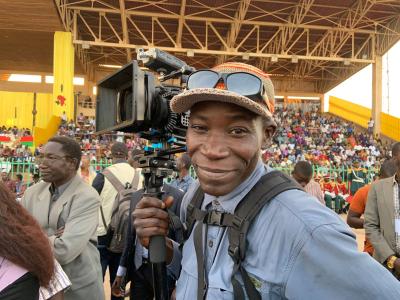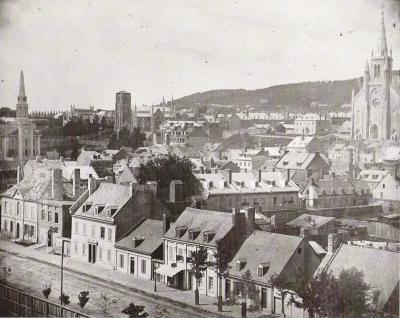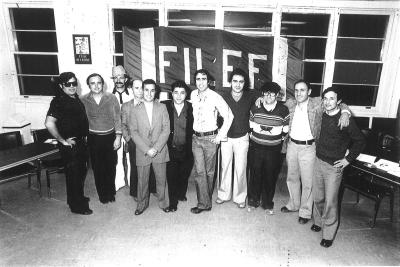The success of Montréal’s leading Colombian traditional dance troupe shows the powerful role of folklore in bringing people together across cultures.
Ballet Raíces de Colombia
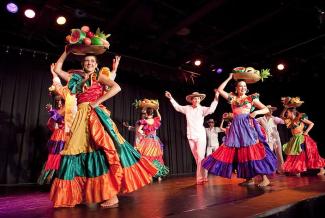
Ballet Raíces de Colombia was founded in 2001 and has grown to become one of the best-known folk organizations in Montréal’s Latin American cultural scene.
The troupe’s story began in 1998, when the Consulate General of Colombia in Montréal was planning a turn-of-the century celebration for the city’s diplomatic community that would feature a performance of Colombian traditional dance. The Consulate invited one of Colombia’s leading folk-dance troupes: Ballet Folklórico de Antioquia (BFDA). And to direct the event, BFDA brought in art historian, dancer, choreographer, fashion designer, and writer Carlos Reyes.
When Carlos Reyes arrived in Montréal, the city already had a Colombian dance troupe, the Orquídeas de Colombia. But the group lacked the technical prowess for such a large-scale major performance. A sweeping reorganization was needed to bring the Colombian diplomats’ vision to the stage—and to teach the dancers core techniques of Colombian folk dance, make costumes, plan rehearsals, and beyond. The whole process took eight months. Carlos Reyes was so successful at leading the troupe that the dancers asked him to stay on as artistic director. In 2001, Ballet Raíces de Colombia was born.
“One of the most moving moments in the history of Ballet Raíces was our first performance, on August 8, 2000. All the costumes were authentic Colombian folk costumes. That day all the dancers suddenly seemed to bloom. There was something inexplicable at work,” Carlos Reyes remembers.
An unflagging commitment
Ballet Raíces de Colombia
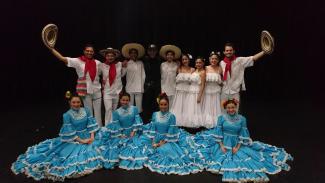
While he was hard at work restructuring the dance troupe to prepare the consulate performance, Carlos Reyes also obtained his work permit and learned French. He was hired as a trainer at the Université de Montréal’s athletics facility (CEPSUM) and other local gyms. He had to earn his living working part-time as an aerobics instructor, since all his work at Ballet Raíces de Colombia was performed as an unpaid volunteer. Much of Reyes’s spare time was dedicated to organizing the troupe, including choreographing and rehearsing for performances, designing costumes, and handling management and accounting tasks.
Since the troupe does not receive government subsidies or private-sector funding, its activities are financed by its members, inspired by their love of Colombian folk dance and art. While 70% of its dancers are Colombian, 30% have other, diverse origins. Non-Colombian members bring their own personal vision of folk dance and artistic background to the mix. And being part of the ballet provides them an enriching cultural experience, the opportunity to practise their Spanish, and membership in a stable socio-cultural community.
Carlos Reyes explains how being part of the ballet has given him a family in Montréal. “Ballet Raíces is like having children, friends, and sometimes even rivals, all at once. I have to set a good example for them. The ballet is all I’ve had in my life. It’s my passion, a source of joy and tears,” says Reyes with deep emotion. Of course, Ballet Raíces’ mission is to spread Colombian folklore in Montréal, across Canada, and around the world. But for its members, it fulfills another mission: to grow and become better people, harnessing the power of dance to create positive change in their lives.
A dance school opens its doors
Ballet Raíces de Colombia - École
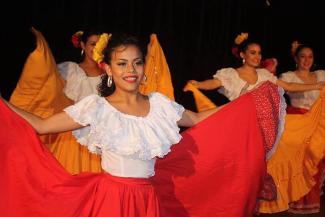
In 2005, Ballet Raíces de Colombia founded a dance school to train new members. To join the ballet, aspiring dancers had to first study at the school. After a year or a year-and-a-half, they were ready for a role in Ballet Raíces performances. This process made time to observe how new members were adjusting to life with the ballet, and how they fit into the group. And seeing this development is another reason why, for Reyes, “every performance by the ballet is emotionally charged.”
On October 29, 2016, Ballet Raíces celebrated its 15th anniversary with a performance called Colombia – A Country of Regions—a journey through Colombia’s vivid landscapes. Audiences experienced the nation’s traditional costumes, the folklore of its different regions, the aromas of its coffee, the mountains, the biodiversity of its jungles and plains, the beauty of the San Andrés Sea, the vivid colours of the Pacific Ocean, and the yellow butterflies of Gabriel García Márquez.
Awards and recognition
Ballet Raíces de Colombia
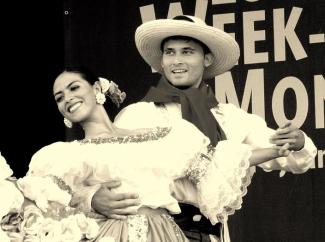
In its fifteen years of existence, Ballet Raíces has performed many times and even represented Colombia in dance festivals around Canada, including Mondial des Cultures de Drummondville, the Festival International de Percussions de Longueuil (where it won the award for new talent), and Festival des traditions du monde de Sherbrooke. In late 2016, the ballet represented Colombia at the Bombay Tourism Festival in India.
For Carlos Reyes, years of hard work are now paying off as the quality of his folk-dance troupe garners international recognition. In 2017, the ballet was invited to perform in Poland and Spain, and in 2018 in Sri Lanka. Ballet Raíces de Colombia has also won multiple awards from organizations including Colombian diplomatic services in Canada, Quebec’s Latin American chamber of commerce, and LatinArte.
Today, Carlos’s dream is to find a dedicated home for Ballet Raíces de Colombia—a permanent place to rehearse and store equipment that would give the troupe greater stability. Folk organizations like Ballet Raíces are “a great strength,” says Carlos Reyes, because they “enrich the cultural life of the city and promote intercultural relations.”

